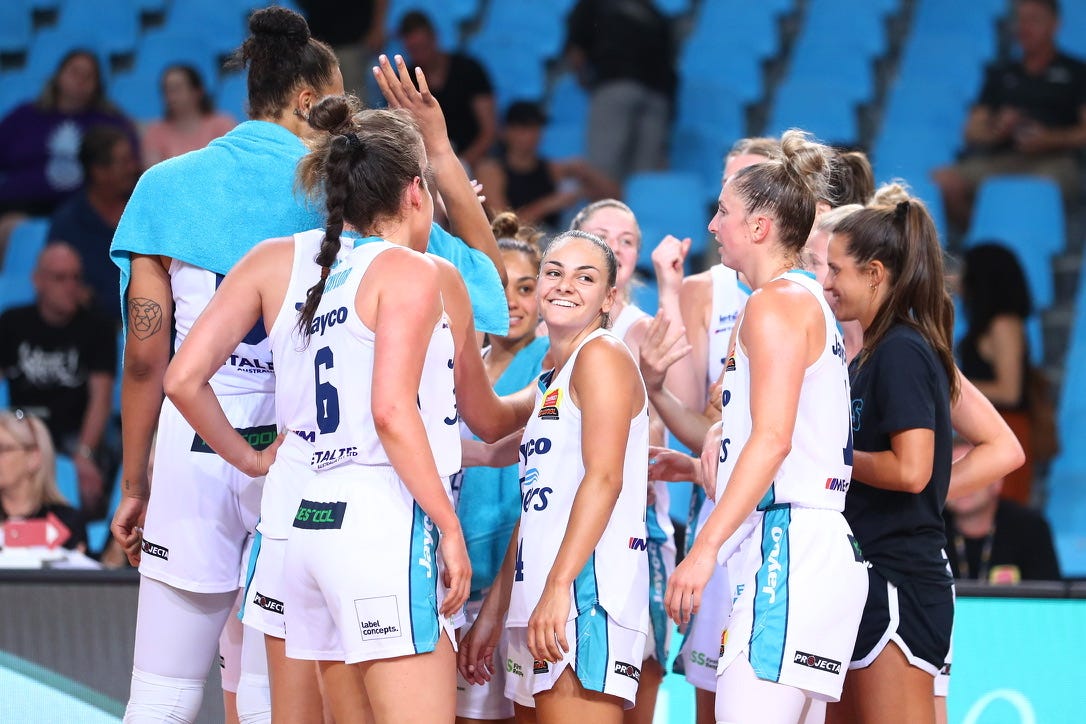no capital: on the cost of change in women's professional basketball
There is a sly, ubiquitous belief in the WNBL that basketballers who are not good enough to make it go to football. It is the only reason, of course, an athlete would choose the AFLW over the WNBL.
Last week it was reported the Melbourne Boomers were looking to sell their WNBL licence to private investors in Geelong.
The transfer down the coast1 would result in only a single Melbourne basketball team existing in the women’s professional league.
It would be a devastating outcome: for the legacy of the Melbourne Boomers who, established in 1984 as the Bulleen Boomers, are not only the oldest WNBL club but the longest-running elite women’s sporting team across all sports in Australia; and for all the local athletes who already exist in an area simultaneously saturated with talent and depleted of opportunity.
There should be, at minimum, two teams in Melbourne. There should also be a team in Geelong, with its flourishing junior basketball participation rates, its strong community and its desire. There should be a team in Tasmania, or the Northern Territory, or another one in Queensland.
There should be, crucially, just more than eight.
Are you new here? Take the new reader survey.
I was in my first year within a WNBL program when the AFLW was founded.
It was 2016 and the event was heralded as something that would change the landscape for Australian female athletes; I was excited for everybody who had worked so hard, over decades, to make the league happen.
The minimum wage for the first AFLW season, pitched as $5,000, was then negotiated to be calculated pro-rata on an AFL male rookie wage of $29.32 an hour and increased to $8,500. It was supplemented with football boots and runners, a travel allowance when playing interstate, income protection insurance, out-of-pocket medical expenses for fifty-two weeks post-contract, and carers allowance for players travelling interstate who had a child under twelve months old.
Meanwhile, I was an eighteen-year-old WNBL Development Player being paid nothing. There was no minimum wage in the women’s national league. I was not, even slightly, tempted to leave basketball.
I loved the sport; it was all I had ever played and my ambition to do it professionally, specifically in the WNBL, had been tied intricately to my identity since I was a child.
There were eight WNBL teams in 2016. There were zero AFLW teams, but they were coming.
In November of 2017, after the completion of its inaugural season in March, the AFLW announced its minimum wage, that was set to increase to $9,276, would actually rise by 23 per cent up to $10,500 for the 2018 season.
Clubs would also receive a marquee budget they could allocate to their most marketable players, ranging from $5,000 to $10,000 per player, with a cap of $40,000 per team.
Later the same month, the WNBL announced it would implement a base wage for the first time.
It was reported that ‘all WNBL players [were] now being paid’ at least $7,500, though in actuality Development Players were not included in the deal.
I was paid $500 for the 2017 season. I was appreciative. I was not tempted to leave.
There were eight WNBL teams. There were eight AFLW teams.
The following year, the AFLW announced the league’s first Collective Bargaining Agreement, which saw the minimum wage for women footballers rise a further 27.6 per cent.
Tier 4 players, the lowest level in the hierarchal structure, would now earn $13,400.
All AFLW players now had access to an injury and hardship fund, while there were relocation allowances, given the part-time nature of the competition, for players who lived further than one hundred kilometres away from their AFLW club.
Athletes in the top four AFLW teams would also share in a finals prize-money pool of $127,500, and a fund of $335,000 for education and training grants and wellbeing support was introduced, which included funding for a research project examining the specific needs of AFLW players.
Two new AFLW teams were added to the competition.
Nicole Livingstone, then AFL head of women’s football, said:
‘On the eve of our third year of competition, we are proud of AFLW enabling more opportunity for more female players with 300 players joining high performance environments in 2019.’
I was paid $750 for my third WNBL season. There were eight WNBL teams. There were ten AFLW teams.
I still did not consider leaving.




